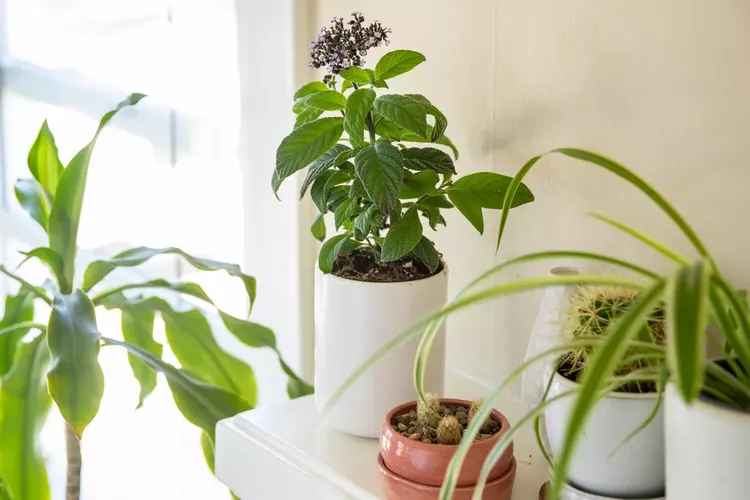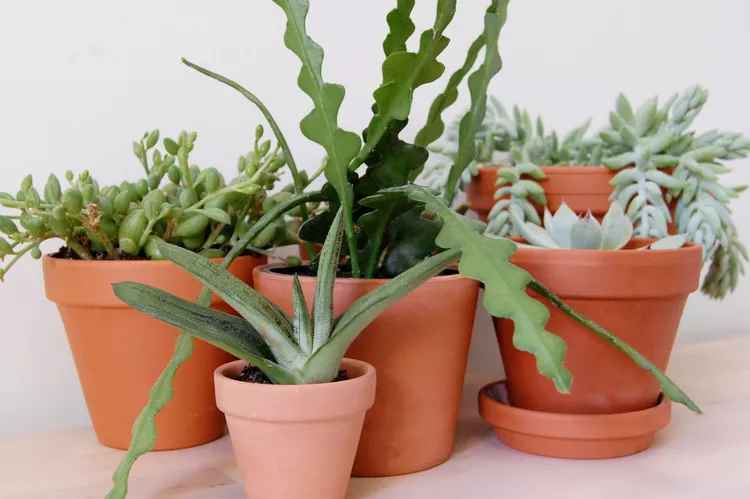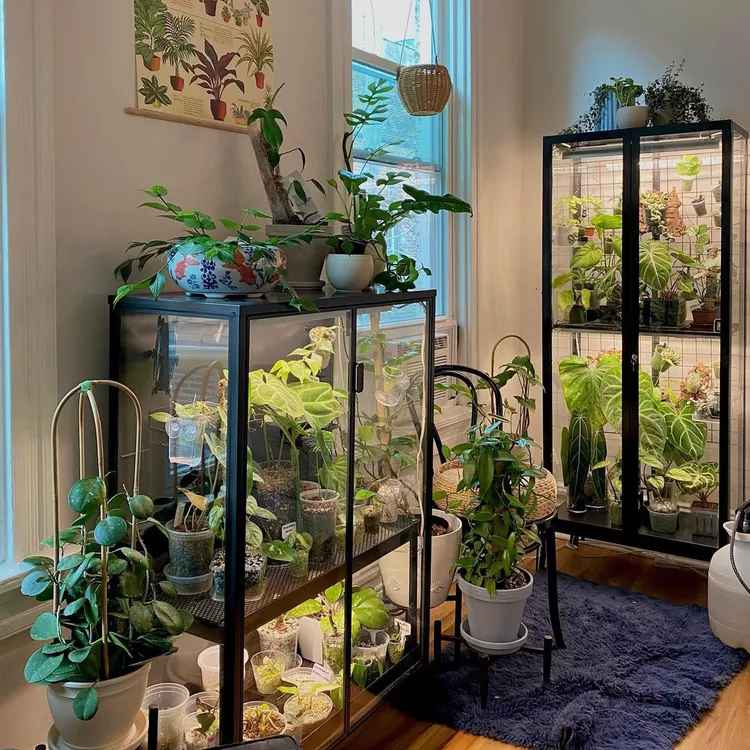The pothos and vining varieties of philodendron are among the most popular types of houseplants, but are often confused with one another. They may look similar and share many of the same characteristics and requirements, but they are two different plants. Once you know how to distinguish them, it is easy.
The Most Popular Houseplants
WARNING
Pothos and philodendron both are toxic for cats and dogs.
Differentiating between Pothos and Philodendrons
PothosPhilodendron
Taxonomy EpipremnumPhilodendron
Leaf Shape & Texture Thick and waxy Heart-shaped, thin
Aerial roots One per node. Can have multiple per node
Growth Habits New leafs grow from the previous leaf
Pothos, also known as “Devil’s Ivy”, and vining Philodendrons can be distinguished by a few key differences. They can be distinguished by their taxonomy and leaf texture and shape, as well as their aerial roots, petioles and growth habits.
Taxonomy, a branch of science, is concerned with classifying biological organisms. It’s used to organize animals and plants into families and genera. When it comes to plants and their nomenclature, taxonomy is mostly concerned with the botanical nomenclature.
Pothos and Philodendrons belong to two different genera. Pothos is a member of the Epipremnum family, while philodendron is a member of the Philodendron family. Both pothos and Philodendron are members of the aroid family (Araceae).
Leaves Shape and Texture
The leaves are one of the best ways to distinguish pothos from philodendrons. The leaves of many philodendrons are heart-shaped and have a softer texture. Pothos have thicker, waxier leaves.
The differences in leaf shape are most noticeable where the petiole joins the base of the leaves. Consider a heartleaf pothos and a philodendron. The base of a pothos leaf may be relatively straight but the base on a philodendron is curved dramatically inwards, resembling the top of a rounded heart.
Aerial roots and petioles
You can also see differences between the aerial root and petioles in pothos and the aerial root and petioles in philodendrons. Pothos and philodendrons both have aerial roots with aggressive growth patterns that enable them to climb or vine around surfaces. Pothos (pictured on the right) have only one large aerial node per node. Philodendrons, however, may have multiple smaller aerial roots in each node and look more wild.
The small stems are called petioles. They connect the leaves with the main stems. Due to the difference in growth habits of the two plants, the petioles on pothos are indented toward the stem that they connect to. The petioles on philodendrons are fully round.
New leaves and growth habits
Cataphylls are another way to distinguish between philodendron and pothos.2 New leaves on a trailing Philodendron emerge from the cataphylls. These small leaves encase the new leaf, protecting it as it grows. Cataphylls are small leaves that encase and protect the new leaf as it grows. They remain on the plant for a while after the new leaf unfurls, before eventually drying out and falling off. Pothos does not produce new leaves this way. Pothos leaves do not grow from cataphylls. Instead, they simply unfurl and grow from the previous leaf.
Growing Differences
Pothos and philodendrons are both low-maintenance plants. They have similar requirements for light, soil and water. There are some minor differences between the two that you should be aware of.
Pothos and philodendrons are both propagated through cuttings. However, philodendrons produce offsets which can also be used to propagate plants. Pothos is also more drought-tolerant.
Another plant is often confused with pothos or philodendrons. Scindapsus Pictus, a plant of the aroids family, is also known as satin pothos. However, it is not a pothos. It has a vine-like growth habit, with silvery patches on all its leaves. This gives it a dazzling iridescent appearance. The satin pothos is easily identified by its distinctive leaf pattern.
Pothos and trailing Philodendrons are similar in appearance. These general guidelines will allow you to easily identify any pothos or philodendron species.





